How To Draw Facial Expressions
Emotions are what breath life to the faces that we draw. Without them, our drawings would be dead and flat.
In order to portray emotions convincingly, we must be familiar with the facial expressions that comprise them.
For decades, the expressions of human emotion has been the subject of study for psychologist Dr. Paul Ekman.
Dr. Ekman has discovered that there are six universal emotions that are common to all humans, regardless of race, gender, or culture. Furthermore, he has spent years decoding these emotions and breaking down their expressions into a series of muscle movements. He reported his findings in his book: Unmasking the Face.
This information is tremendously useful for the artist and in my attempt to learn how to draw the face, I’ve sought out Dr. Ekman’s books.
In this article, I’d like to share with you these six universal expressions and the traits that distinguish them. You can then apply this knowledge to your portrait drawings.
Emotions are typically conveyed through 2 or 3 facial areas such as the eyebrows, eyes, nose, or mouth.
When drawing the different facial expressions, you can control the intensity of the emotion shown by the number of facial areas that are involved. In general, the more areas involved, the more intense the emotion.
For example, if you wanted to show mild anger, you might only express it in the eyebrows while leaving the rest of the face neutral.
You can also blend multiple emotions by mixing the expressions. For example, you can blend anger with sadness by combining the angry brow with the frowning mouth. Certain emotions blend more naturally with others, so keep this in mind.
The 6 Universal Facial Expressions
Surprise: The eyebrows are raised, the eyes are opened wide, and the jaw drops open, parting the lips. The lifting of the eyebrows produces long horizontal wrinkles across the forehead (in extreme cases).
The important thing to remember about surprise is that the face is not tense; the upper and lower eyelids are relaxed and the mouth just hangs open without any tension. This will be important in distinguishing surprise from fear.
Fear: Similar to surprise, the brows are also lifted in fear. However unlike surprise, with fear, the inner corners of the brows are drawn together. This gives a more straightened appearance to the outer corners of the eyebrows.
In the fear brow there are usually horizontal wrinkles across the forehead, yet they are shorter than the ones shown in surprise. Instead, they are more concentrated in the middle.
Although both fear and surprise have widened eyes and opened mouths, the difference between the two comes down to tension. In fear, the lower eyelids are tensed and raised. While the mouth has tense lips and the corners are drawn back and down.
Disgust: The most important features of disgust are in the mouth and nose. Regarding the mouth, the upper lip is raised, while the lower lip may be raised or lowered.
The nose is wrinkled causing lines to appear on the sides and bridge of the nose. The more intense the disgust, the more these wrinkles will be apparent.
Anger: In anger, the eyebrows are drawn down and together. This is not to be confused with fear, where the brow are drawn together and up.
The best way to depict this is to add vertical wrinkles between the eyebrows. Without these wrinkles, the expression just won’t look right.
The eyes will also widen with the lower lid tensing. When this is combined with the lowering brows, it cause the eyes to look as if they are bulging. The nostril will flare. The mouth can either be pressed shut or opened with the teeth showing. In both cases, the lips will be tense.
Joy/Happiness: Joy is expressed though a smile or a laugh. The corners of the mouth are drawn back and up. This pushes the cheeks up and causes the eyes to appear smaller.
One very important feature of the smile is that there will be wrinkles at the corners of the eyes, also known as “crow’s feet”. The absent of these wrinkles are usually a very reliable sign that the smile is not genuine. This tiny detail will go along way to helping you make the drawing more realistic.
Sadness: The inner corners of the eyebrows are raised and may be drawn together. The inner corner of the upper eyelid is drawn up, and the lower eyelid may appear raised. The corners of the lips are drawn down, or the lips appear to tremble.If you combine your understanding of these 6 emotional expressions with a good knowledge of the facial muscles that lies underneath, you will go very far in mastering facial expressions.

If you wanna learn more about portrait drawing, check out my “Portrait Fundamentals Made Simple” course.
It’s a very beginner-friendly course that walks you through all the basics of portraiture, from constructing a basic head, facial proportions, drawing the features, and finally drawing a realistic portrait step-by-step.


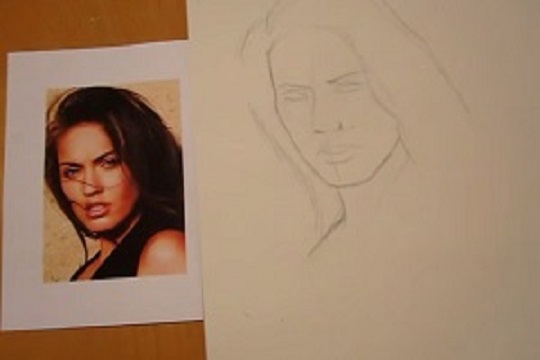
![Drawing Realistic Portrait Series [1 of 8] – Intro & Materials](https://mydrawingtutorials.com/wp-content/uploads/2012/08/Portrait-Lesson-1.jpg)
![Drawing Realistic Portrait Series [2 of 8] – The Fundamentals of Shading](https://mydrawingtutorials.com/wp-content/uploads/2012/08/Portrait-Lesson-2.jpg)

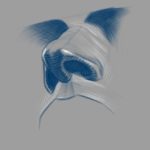
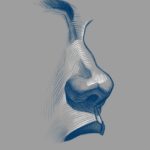
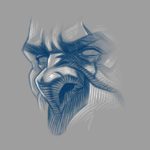
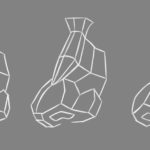
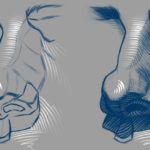
I like you tutorials and have learned a lot when I get them over email I sit down set up my tools and draw with you then if you go to fast I can freeze hold catch up and continue I feel bad I don’t pay you any money is there a web site you can start with a little money and then don’t want to buy boring cd I wont watch them I really look forward to your lesson coming over my g mail and that’s the way I want to pay for each lesson in the low money range so I don’t hit my credit card hard
Good day I love the 3 portraits was wondering how I shoot draw it thanks
Hi again Ethan,
I really liked those free portrait drawing tutorials that you sent to my email. I was just wondering if you can do something similar to that but showing the process of drawing an actual portrait and not just the eye. Also, for some of your time lapse portrait drawing videos in YouTube can you have a commentary so we know what exactly you are doing? Remember, these are all suggestions,you don’t HAVE to do this.
-Viv
Ok thanks Ethan. I will go check it out right now. I LOVE your tutorials. Thanks! -Viv
Hi Ethan I can’t get my 3rd tutorial for the portrait drawing in my email what do I do? Thanks! -Viv
Hi Viv,
No problem 🙂 Here is the link to the 3rd lessons: http://mydrawingtutorials.com/drawing-realistic-portrait-3-of-8/
Hi Ethan just a quick thankyou from north wales,really enjoyed your free tutorials,very helpful indeed. awaiting delivery of my dvd’s,really excited
Thank you so much. Extremely helpful to me. Very well presented so easy to comprehend. Thank you Mary.
Hello Ethan:
I am not one to post on websites or purchase virtual lessons for that matter. However, I thought it was important to let you know that your introductory video resonated for me at SO many levels. I have recently decided to pursue my passion again, after many, many years! I was shocked to see how bad my first quick attempt (I wanted to guage myself) was! I, being an IT professional, quickly scoured the web for videos, took out 14 books from the library (literally) and the task started to seem daunting after only a couple of days when I stumbled across your videos. Albeit some would call me cheap (I prefer “sensible”) and I rarely splurge on things simply for me – I thought you did such an amazing job that I went ahead and purchased access to your videos. I hope to send you “before and afters” at some point and given how much I have learned already – I imagine it will be an astounding difference. From someone who can draw portraits decently, I have discovered I am way behind as far as how wonderful a job you do and how far portrait drawing has come over the years. – Thank you!
You are so welcome, Amanda! Thank you for sharing your story. I know exactly what you mean 🙂
Hi Ethan,
today I gave the order for the DVD’s and are thrilling till I get it. In the last time I work on drawing horse, in the moment on the face portrait and figure out that the proportion the root at all is, probably the human face the same, or???
Have you some tips for the horse drawing ?
Some books sound good but on the end and in some steps they bring the same mistake than I see on my work,(Nostril, nose eyes and the jaw in proportion to the ear’s).
Maybe I find in your lesion some related tip’s.
Peter
I am still waiting for my course I order two weeks ago
ray smith snr
Hi! Ethan, how much are the dvds cost because I saw this yesterday and I saw the date on the video was a year ago. I would like to purchase it as long as it is under $50
till now did not receive the DVD’s and books hope it will receive it very soon
seems very interesting
Hi Patsy,
Thank you very much for your purchase. The DVD was shipped out on the 7/1/13. International usually takes longer than regular mail. It should arrive within the next 2 weeks. I hope you like the course. Thanks again! – Ethan